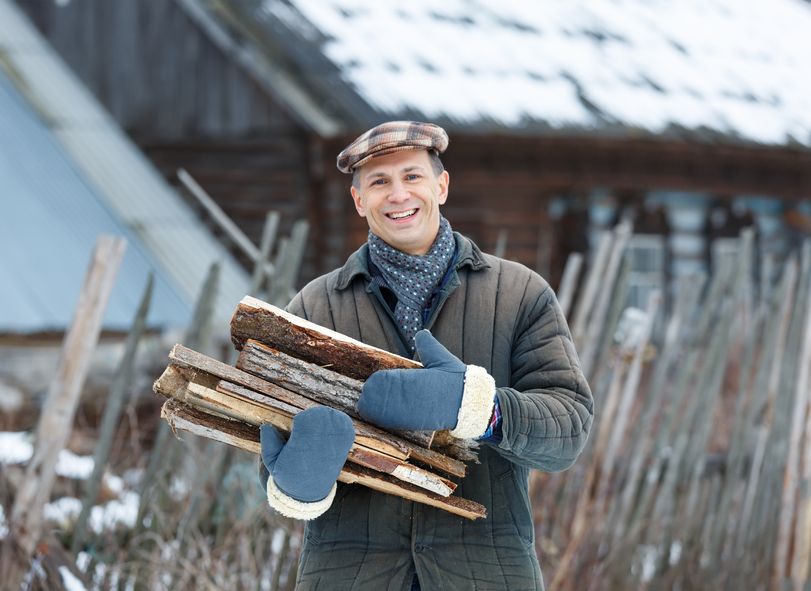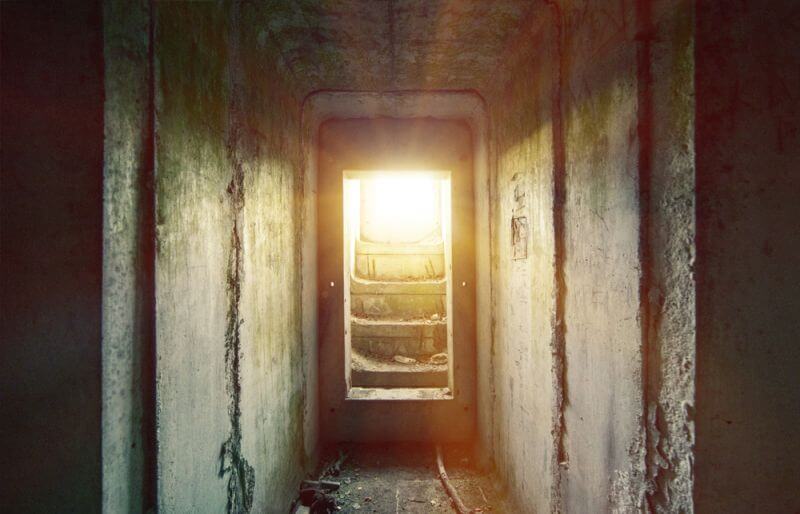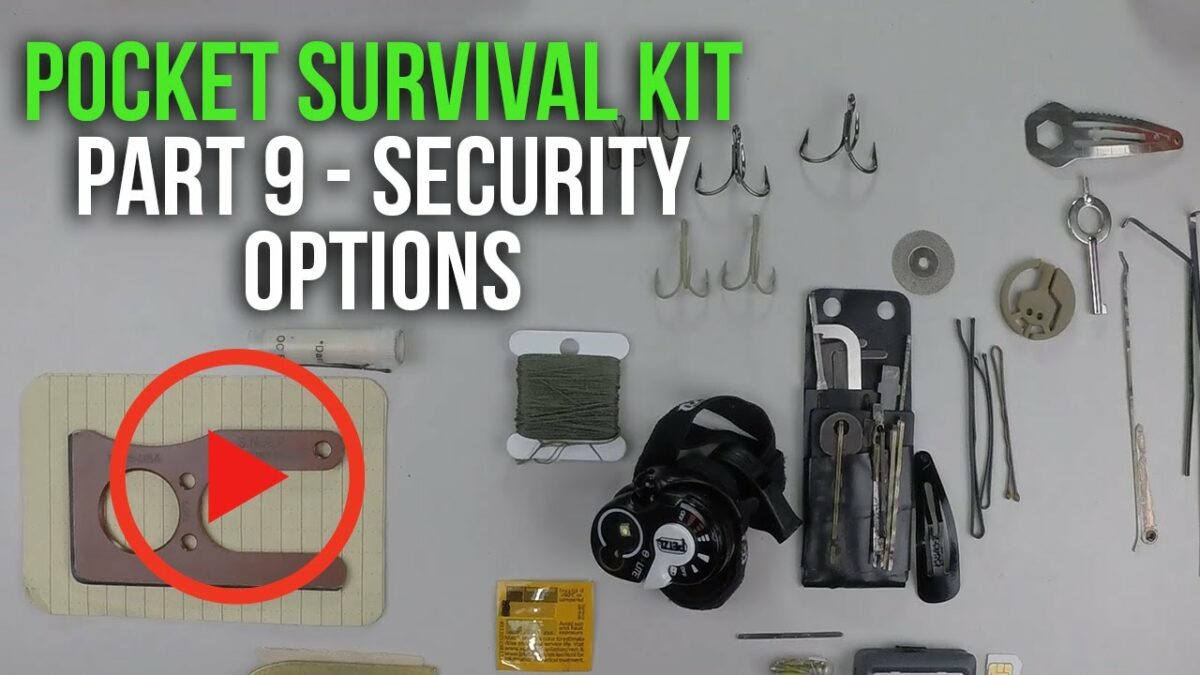More and more people are talking about going off the grid; not just preppers, but average middle class people as well. For them, it’s about getting away from high electrical bills, but for preppers, it’s about making sure you’re ready for when the power goes out.
Just about everyone who is talking about going off the grid is thinking in terms of heating with wood. That’s a good choice, as wood has been the heating fuel of choice for most of mankind’s history. As long as there are trees which can be used, heating with wood is cheaper than just about any other option; not only that, but trees are a renewable energy source, so it should even make the environmentalists happy.
While heating with wood is a great option, it’s not perfect. Wood burning stoves are pretty much limited to heating the room that they are in. So if you want to heat your whole home, you either need a very open floor plan or you need some way of moving heat from one room to another.
Wood burning stoves provide much more heat for their size than fireplaces do. That’s actually how wood burning stoves got their start. Most of the heat from a fireplace goes up the chimney, but a wood burning stove can radiate heat from all sides, making it a much more efficient heater than a fireplace could ever be.
The question then becomes, what kind of a wood burning stove do you want? There are a number on the market, so selecting the ideal unit for your needs can be a little tricky. You have to look at each of the factors and decide which one works better for you.
Construction Material
Wood burning stoves are either made of welded steel or cast iron. Both provide about the same amount of heat, so that’s not a factor. There are some design and maintenance differences though. Cast iron stoves generally have curved lines and adornments cast into them, making them look old fashioned, while steel stoves are plain and simple, with very modern lines.
Cast iron stoves need to have their panels reset ever few years to eliminate air leaks. This is a minor inconvenience, but necessary to keep the stove working properly. Steel stoves don’t need this maintenance, but can have a problem with high stress panels burning. The solution to this is to make sure that the steel is at least 1/4″ thick and the high stress panels are replaceable.
Firebox Orientation
One of the most important and most rarely mentioned design criteria is the orientation of the firebox. Most wood burning stoves are built so that the firewood is loaded crosswise to the door, as you look at it.
This only allows the firebox to be loaded about half full, as any fuller will cause the wood to fall against the door while it is burning, creating a potentially dangerous situation. A few have the firebox designed so that the firebox loads so that you are seeing the end of the wood when it is loaded. This allows the firebox to be fully loaded, so it will produce more heat and burn longer than the other.
The first type I mentioned, where the wood is loaded crosswise, is actually more popular. That’s because it provides a better picture of the fire burning in the stove. But if you want the stove for warmth, then the type where the wood is loaded so you see the end is better.
Catalytic or Non-Catalytic
Modern wood burning stoves fall into two categories; catalytic and non-catalytic. The catalytic type actually put out less emissions when they are new, but the emissions gradually increase throughout the life of the catalytic element. This element needs to be replaced after every four to six years, depending on how much you use the stove.
The trend is towards non-catalytic stoves. If you are buying your stove for the purpose of heating your home in the case of a disaster, you’ll probably be better off not having a catalytic stove, as you may not be able to find a new element when you need it.
Efficiency
Efficiency is one of the most talked about and least important specifications on a wood burning stove. Modern stoves, which have been built since 1988, have to meet newer EPA regulations on emissions. That has caused the efficiency of these modern stoves to increase. In other words, you will actually burn less wood to get the same amount of heat on the new stoves, than you did on the older ones.
The EPA regulations only apply to stoves manufactured after 1988, so if you have one that was built before that date, it is still okay to use. However, buying an EPA approved stove will ultimately save you money on the wood you burn.
Other than that, there is no standardized means of determining the efficiency of a wood burning stove. So, you can’t really use the numbers to compare one company’s wood burning stoves with another. About the only thing that those numbers do for you is help you compare the various models that a single manufacturer makes.
Video first seen on PS Clean Air
Soapstone
Some manufactures are now lining the firebox with soapstone. The idea behind this is that the soapstone will absorb heat from the fire and dissipate it even after the fire stops burning. This is true; but there’s a flip-side to that coin. The soapstone has to heat up before the stove starts radiating heat. So, your start-up time is greatly increased over a stove that doesn’t have soapstone.
You can accomplish the same thing that the soapstone does if you have a brick or stone wall behind the wood burning stove. The stove will heat that brick or stone while it is burning. Then, when the fire burns down, the brick or stone wall will continue to radiate the residual heat that’s inside it.
Other Specifications
Manufacturers may provide other specifications for their wood burning stove, but they are really rather immaterial. Burn time, one specification that is sometimes provided, depends on the density of the wood being burnt, how much moisture it has in it and how hot a fire you set. So, whatever specification might be provided for burn time is purely relative.
Another specification that manufacturers like to mention is log length. Most firewood supliers cut their wood to 16 inches, so as long as the firebox is big enough to accommodate that, having it capable of accepting 20 long logs really doesn’t provide any additional benefit.
This article has been written by Bill White for Survivopedia.









Pingback:How To Choose A Stove For Your Off-Grid House | Survivalist Basics | Be Prepared For Anything! | January 12, 2015
|
Rich Bowman | January 12, 2015
|
Good article… thanx!
Marty | January 12, 2015
|
My requirement for wood burning stoves is the are made in the USA (my requirement for most things), and they burn 20″ logs. Since I cut my own firewood this is not a problem. We live in an extremely cold climate and use the stove for 95% of our heating. When it gets down around 0, our upstairs bathroom sometimes freezes, so we use an electric space heater in our plumbing room to help keep the water lines from freezing. I use a ‘torpedo heater’ with diesel fuel in my shop.
Bill Ellis | January 12, 2015
|
http://midwestpermaculture.com/2012/01/thermal-mass-rocket-stoves-on-our-minds/
Check this link. The key to a good wood burning system is capture of the heat produced. If you can put your hand on the exhaust outside the home, most of the heat is captured in the home. Check it out.
DR. JEFF | January 12, 2015
|
THANKS, BILL ELLIS, FOR THAT LINK ON THE THERMAL MASS ROCKET STOVE. VERY GOOD INFORMATION!
Russ White | January 12, 2015
|
During our lean financial times, we have to buy scrap and left over wood to save money. This makes a catalytic stove unusable as catalytic stoves typically need high quality wood. Also, scrap wood comes in variable lengths so I have to cut my wood down to fit my stove. A stove that accepts 26 inch wood would be handy. The last problem I solved was the flue. Modern stoves require a good draft and chimney fires are devastating. Spend the money to insure your flue can take multiple fires. The flue should also maintain a high temp. A flue that is too cool is dangerous and doesn’t draft properly. An engineer and some money will guarantee your flue works properly and you can sleep in peace while your stove is heating the house. I cannot stress enough the importance of spending your money on the highest quality flue.
Amy | January 12, 2015
|
Thank Pray and I hope my husband will get us a wood stove now as soon as possible from his friend AJ.
David Rice | January 12, 2015
|
I have always wanted a woodburning, pot-belly stove. I have walked into houses that had one during a freezing cold winter day and had to immediately remove my coat or jacket. My question is, how safe is it to burn any combustible trash??
Woody | January 12, 2015
|
We purchased a Harman wood stove 3 years ago to supplement our electric heat (heatpump) during cold weather below 40 degrees. It is a great unit and is very efficient. We use ceiling fans and a floor fan to circulate the heat. We have over 6 acres of oak trees, all over 60 ft, so we have plenty of usable wood. If you are in the market for a stove, look at the Harman. They are a little more expensive, but are very good quality.
Marty | January 12, 2015
|
Our last two homes had QuadraFire Stoves. They come with fire brick lining all the way around. The one I currently have also had insulation between the fire brick and the stove top which some how moved towards the flue and caused smoke to back up. When the service tech found the problem, he just removed all the insulation. It solved the problem with the smoke and also made it easier to cook on the stove top.
gena | January 12, 2015
|
I had been under the impression that the EPA had pretty well outlawed wood burning stoves. I guess I was wrong?
Fred Leeuwenburgh | January 12, 2015
|
One thing to remember is that what you think is a good supply of fuel trees may not be. If it is being used by a few “off-griders” the supply might seem inexhaustible. But the world is littered with regions that have been deforested and devistated because of human consumption.
In a shtf scenario when everyone starts using wood as a means to heat their homes/shelters, cook meals and sanitize water that inexhaustible supply will dissapear very fast. Look no further than the two world wars and the great depression where people especially those in the cities were forced to burn funiture and door/window moldings and casings to stay warm and cook.
In Nepal there was a big push to get electricity to remote areas to curb the deforestation. (Not sure of exactly when but late 70s comes to mind.) The end result was an increase in deforestation because people were staying up later because they had light and needed more fuel for heating and cooking. Apparently they didn’t switch to electric heating and cooking as expected.
So what are we to do?
My suggestion would be to first stockpile as much firewood as you can.
Second make sure that you plant replacement trees.
Third be an advocate of keeping as much of the land in your area as forested as you can. Get neighbors and friends to plant trees on their property. Petition local government for more and larger green belts in your area.
Not only is it good for the environment it also provides more habitat for wild game in a shtf scenario or for supplimenting your off the grid lifestyle.
One could also experiment with making paper logs, and alternate wood sources (left over construction wood, pallets and other scrap wood), reducing your garbage output to our landfills.
Jimmy | January 12, 2015
|
One of he biggest heat losses is the combustion air. When the stove, or water heater, runs combustion air is required. That cold outside air is brought in. My water heater and my wood stove now have intake air ducts directly from outside to the appliance. Saves huge amount of heat. I had also found out that my chimney is so good that it sucks out air from the room even when there is no fire.
A high efficiency catalytic stove has an advantage in that there is no visible smoke (once the stove is up to heat).
Rocket mass heaters are great – so much so that many jurisdictions will not approve them, ergo, no insurance coverage for the house. Have the materials and plans stored away for that time….
Adding water coils to your stove so it can heat water in a tank is not difficult.
radarphos | January 12, 2015
|
For off grid wood burning heating one might want to check into Paul Wheaton’s permaculture website that hosts many articles on rocket mass heaters, ovens, stoves. Wheaton offers a camp experience where participants build their own (learning how to build them) and install them in cabins, and even winter tipis in Montana. Its worth a look for those who have not yet built their cabin in the woods, but may be thinking about wood stove heat.
Check out: http://www.richsoil.com/rocket-stove-mass-heater.jsp and
http://www.permies.com/forums/f-125/rocket-stoves
Pat Hill | January 13, 2015
|
I haven’t gone so far as to heat my whole house with wood just the fireplace but I have built a wood burning grill, baker, smoker, oven combination outside my kitchen in the event that I might need this energy source.
It is built with concrete blocks, cement, insulation, and firebricks. Very large oven and can even use it as a cook stove. I got the plans from an article at Mother Earth News. Thought this might interest you.
Pingback:How To Heat Your Home Without Electricity | Survival skills, survival guns, survival guide | January 13, 2015
|
Pingback:How To Choose A Stove For Your Off-Grid House | TheSurvivalPlaceBlog | January 13, 2015
|
mitchel mccoy | January 13, 2015
|
Pay very close attention to the words of Russ White. Good draft is critical and excellent draft is most desirable. Draft is achieved because hot air rises. As hot air rises, air is pulled into the stove to provide oxygen for efficient burning of the fuel.
In order to maintain a good draft, the air needs to be kept warm all the way out the chimney. If the air cools off too soon, guess what? Of course, poor draft and poor heat.
One way to deal with the issue of stoves that are normally loaded crossways is to cut the wood shorter and feed the firebox straight in.
Something else to consider besides the availability of fuel is the actual physical labor involved. When you reach my age and/or have health issues, pulling on a crosscut saw (even if you have one) and splitting wood is difficult and dangerous.
Please remember this, for this can, in fact, be a life or death issue. Many of us, even at a younger age are not as physically fit as we would like to consider ourselves.
BK | January 14, 2015
|
We have every type of energy available in our home. We have forced air gas heat, a gas stove, electric heat, a fire place in the living room and a sizable wood stove in the garage. We even have 3 ceramic pot heaters that will heat up a room with tea lights. (Look it up on you tube). I make my own bio mass logs out of paper in the spring, summer and fall. (Look it up on you tube). We can heat our house and garage with 4 cords of wood per year. I am in the snow belt of Ontario Canada. It is minus -24 degrees right now. I have wood in the fire place and it is a comfortable 74 degrees 3 rooms from my heat source. We use fans and air filters to keep the airflow moving in the house. If the power goes out we have electric fans to keep air moving. Peace everyone BK
Great Grey | January 14, 2015
|
Back in the ’60s & ’70s the house we had, had a wood burning forced air furnace and it could handle logs 4 foot long or maybe a little more end view (if you can handle them). It also kept the house warm even when the power was out, not as nice but reasonable.
Pingback:New EPA Rules on Wood Stoves: 5 Things You Should Know | Survival skills, survival guns, survival guide | February 3, 2015
|
Pingback:Like To Stay Warm On A Cold Night ? - 'Nox & Friends | February 5, 2015
|
Pingback:How To Heat Your Home Without Electricity - US Crisis PreppersUS Crisis Preppers | February 5, 2015
|
Pingback:EPA Rules On Wood Stoves: 5 Things You Should Know | Free Kentucky | February 11, 2015
|
Pingback:How To Build A Rocket Mass Heater - Bio Prepper | May 17, 2015
|
Pingback:The Basic List For Your EMP Survival | The Prepper Dome | November 23, 2015
|
Pingback:This Is How To Protect Your Firewood During Winter | Prepper's Survival Homestead | December 25, 2015
|
Pingback:10 Things To Replace Power During A Blizzard | | disasterdefense.us | February 5, 2016
|
Pingback:How To Heat Your Home Without Electricity - Prepper Ways | February 19, 2016
|
Pingback:This Is How To Protect Your Firewood During Winter | Survivopedia | December 18, 2017
|
Pingback:Surviving Off-grid: Hot Water From Your Wood Stove | Survivopedia | December 18, 2017
|
Pingback:Winter Survival And Blizzard Prep Tips | Survivopedia | March 13, 2019
|